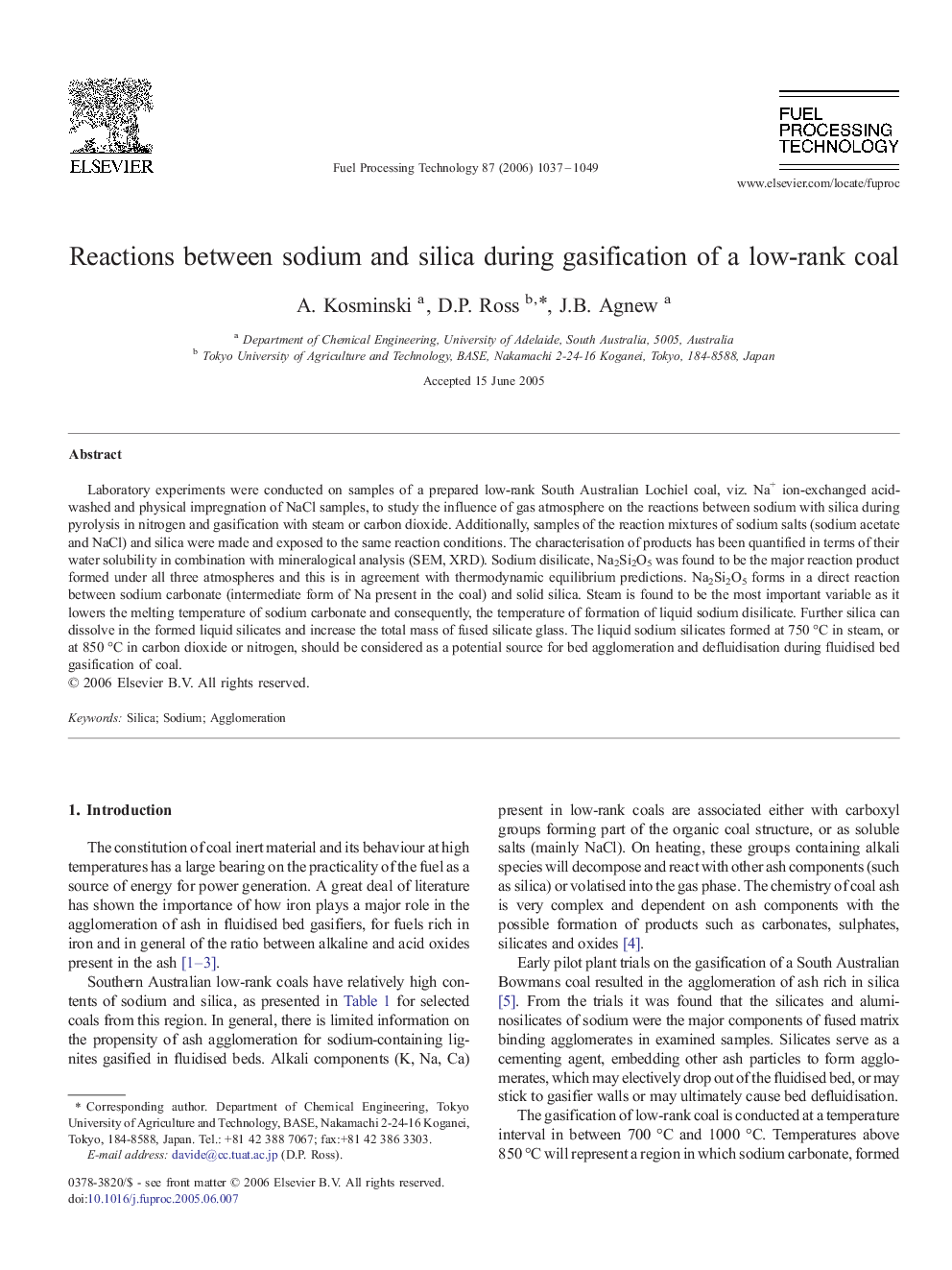| Article ID | Journal | Published Year | Pages | File Type |
|---|---|---|---|---|
| 211572 | Fuel Processing Technology | 2006 | 13 Pages |
Laboratory experiments were conducted on samples of a prepared low-rank South Australian Lochiel coal, viz. Na+ ion-exchanged acid-washed and physical impregnation of NaCl samples, to study the influence of gas atmosphere on the reactions between sodium with silica during pyrolysis in nitrogen and gasification with steam or carbon dioxide. Additionally, samples of the reaction mixtures of sodium salts (sodium acetate and NaCl) and silica were made and exposed to the same reaction conditions. The characterisation of products has been quantified in terms of their water solubility in combination with mineralogical analysis (SEM, XRD). Sodium disilicate, Na2Si2O5 was found to be the major reaction product formed under all three atmospheres and this is in agreement with thermodynamic equilibrium predictions. Na2Si2O5 forms in a direct reaction between sodium carbonate (intermediate form of Na present in the coal) and solid silica. Steam is found to be the most important variable as it lowers the melting temperature of sodium carbonate and consequently, the temperature of formation of liquid sodium disilicate. Further silica can dissolve in the formed liquid silicates and increase the total mass of fused silicate glass. The liquid sodium silicates formed at 750 °C in steam, or at 850 °C in carbon dioxide or nitrogen, should be considered as a potential source for bed agglomeration and defluidisation during fluidised bed gasification of coal.
